If you build it, they will come...?
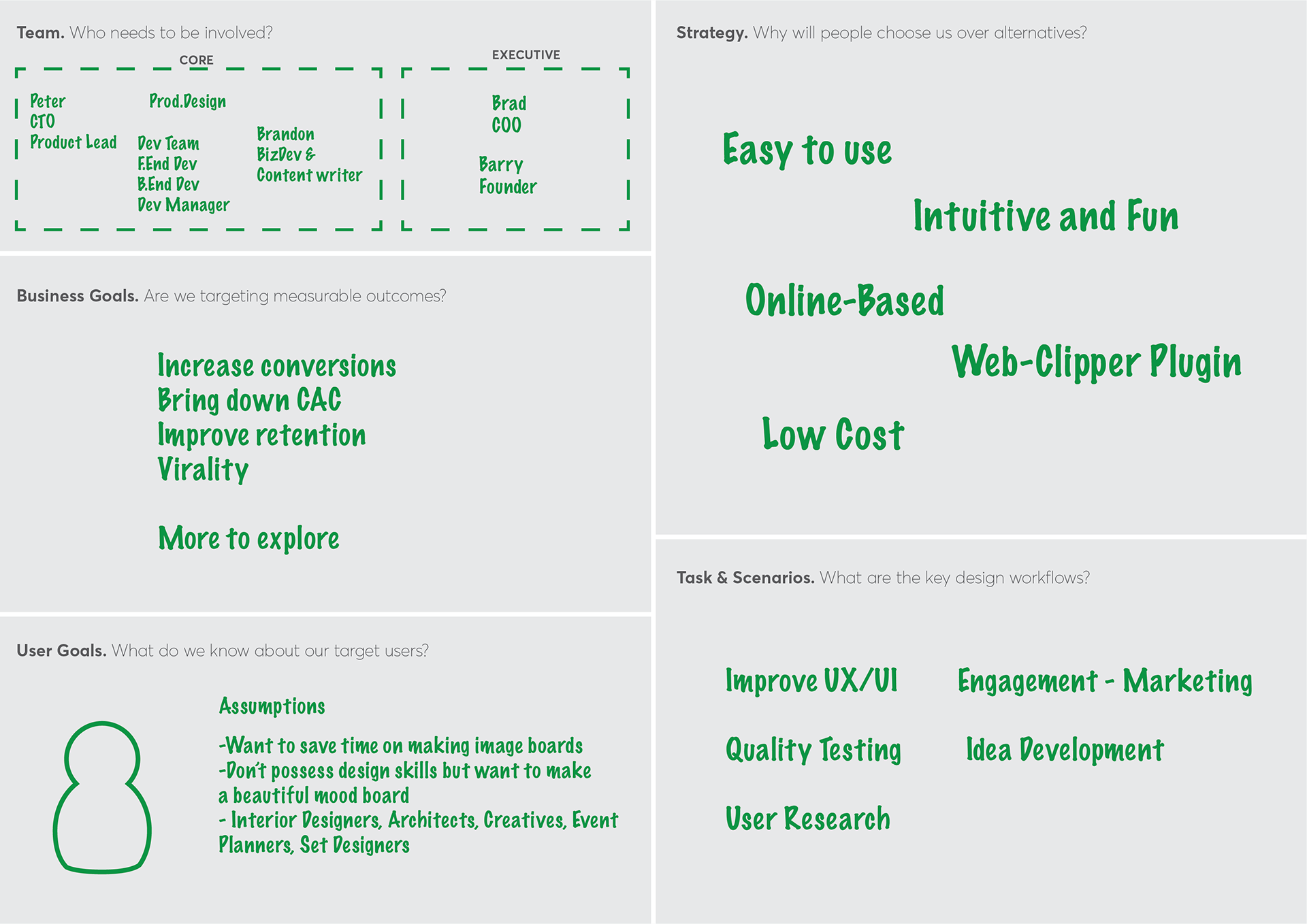
UX Questionnaire

Business Model Canvas
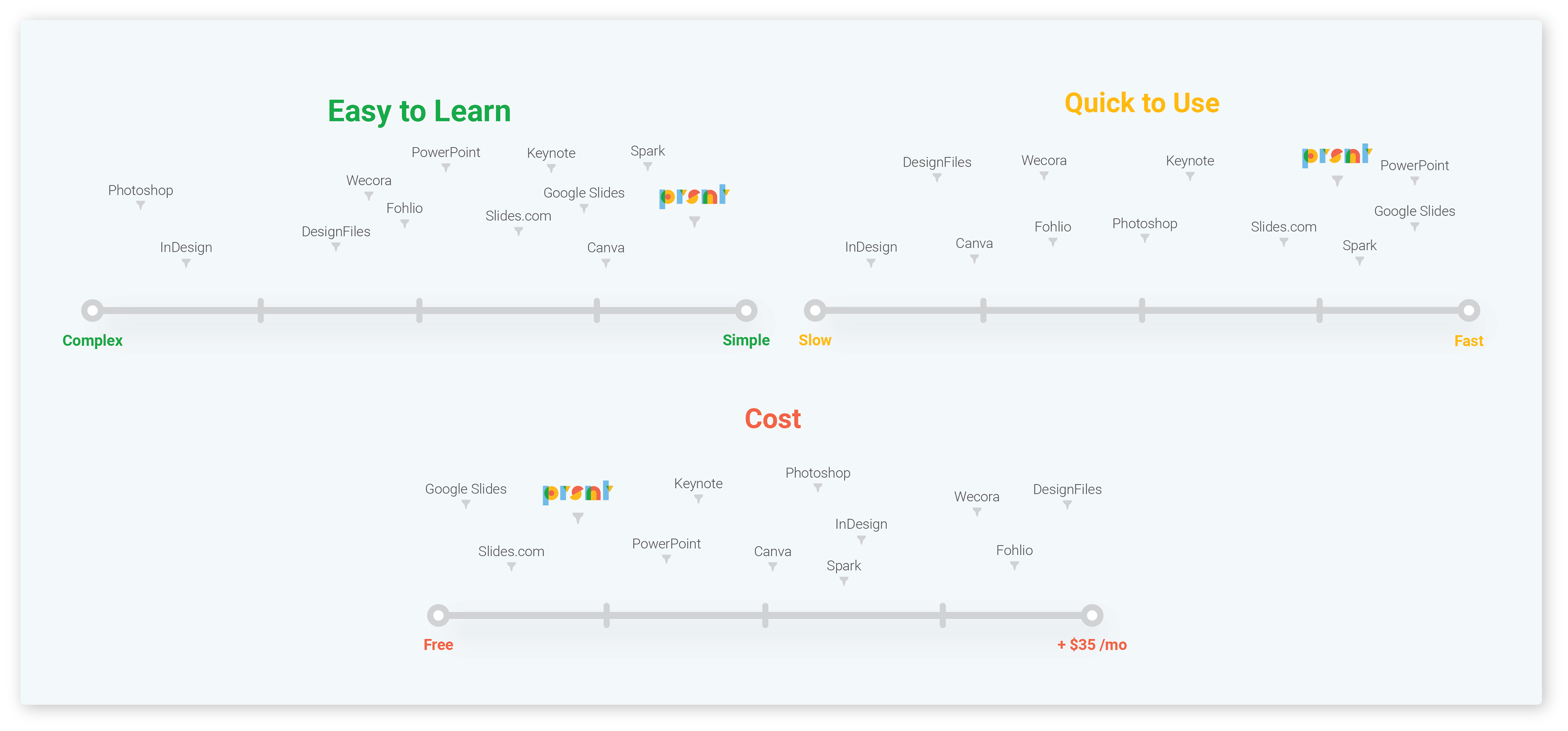
Competitive Analysis
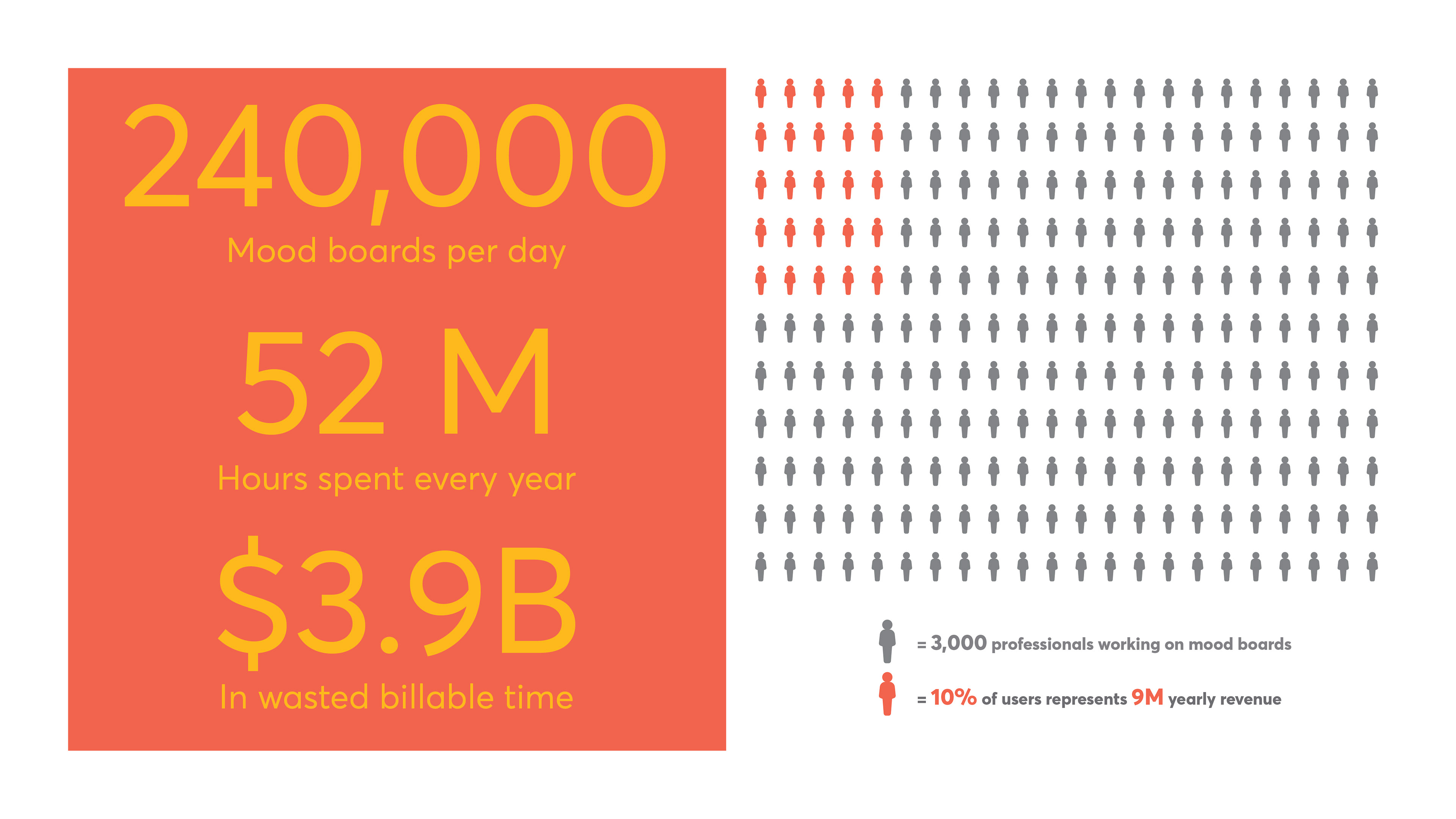
Data About Users
User Insights
Survey Results
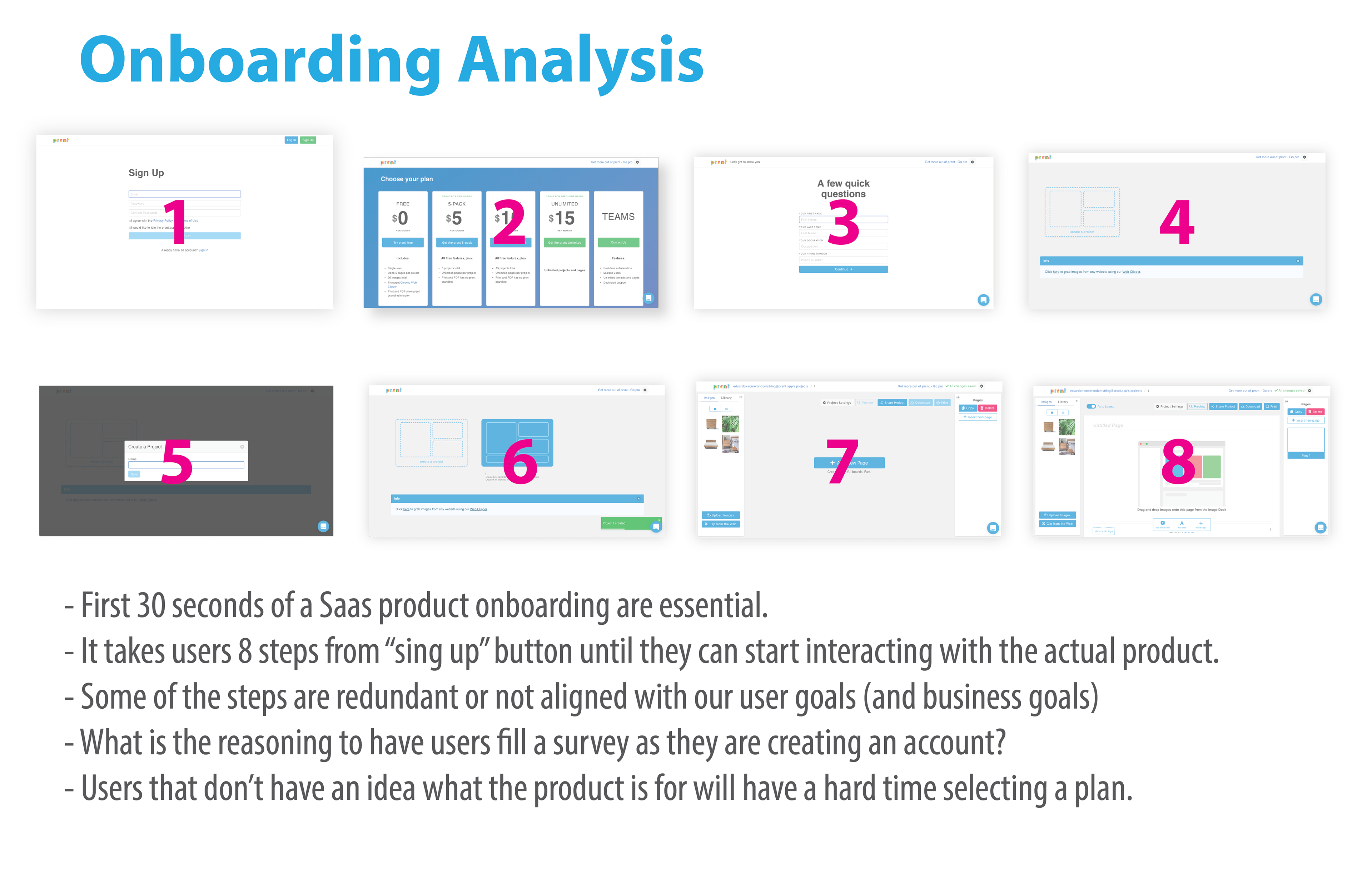
BEFORE
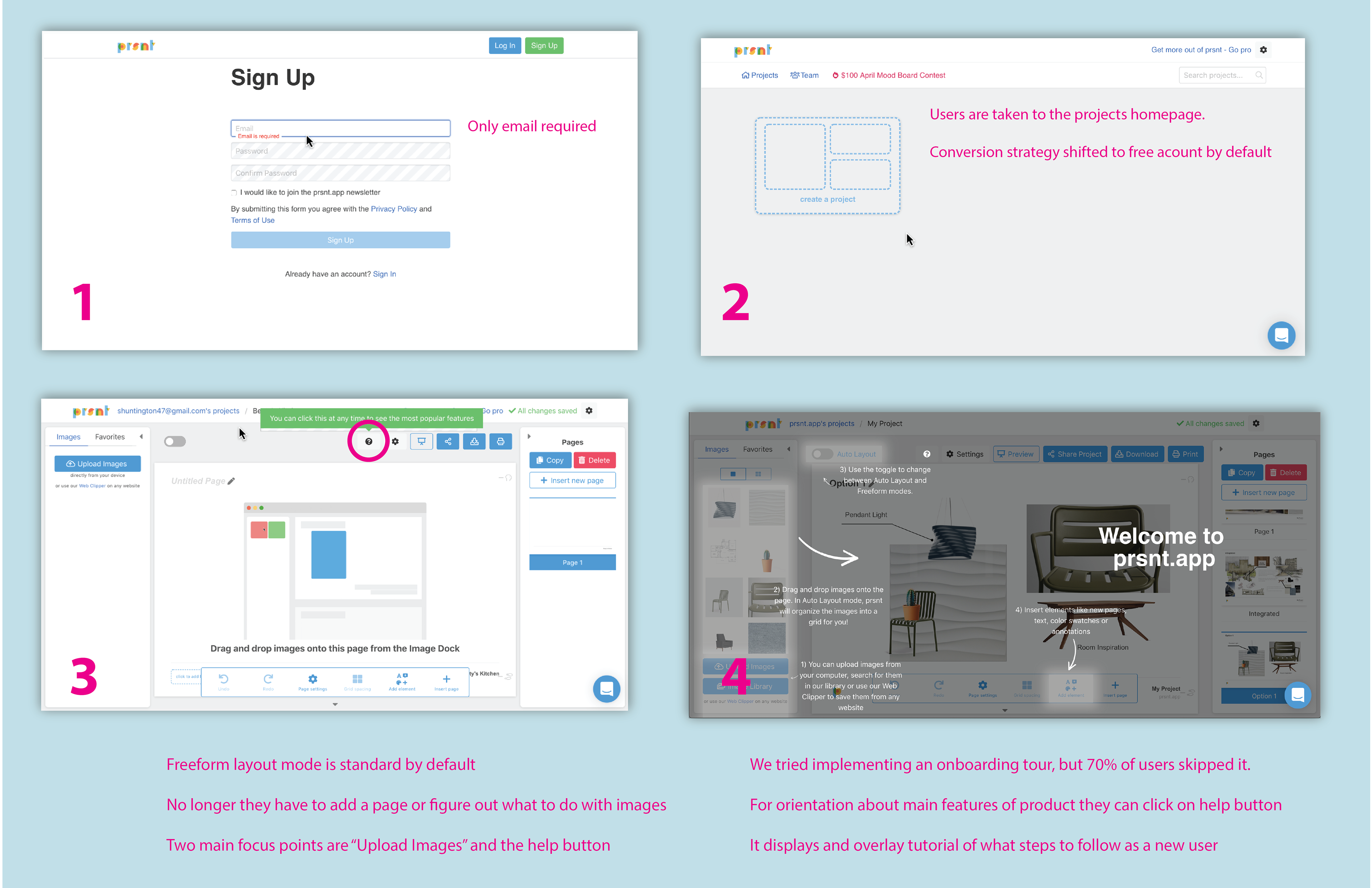
AFTER

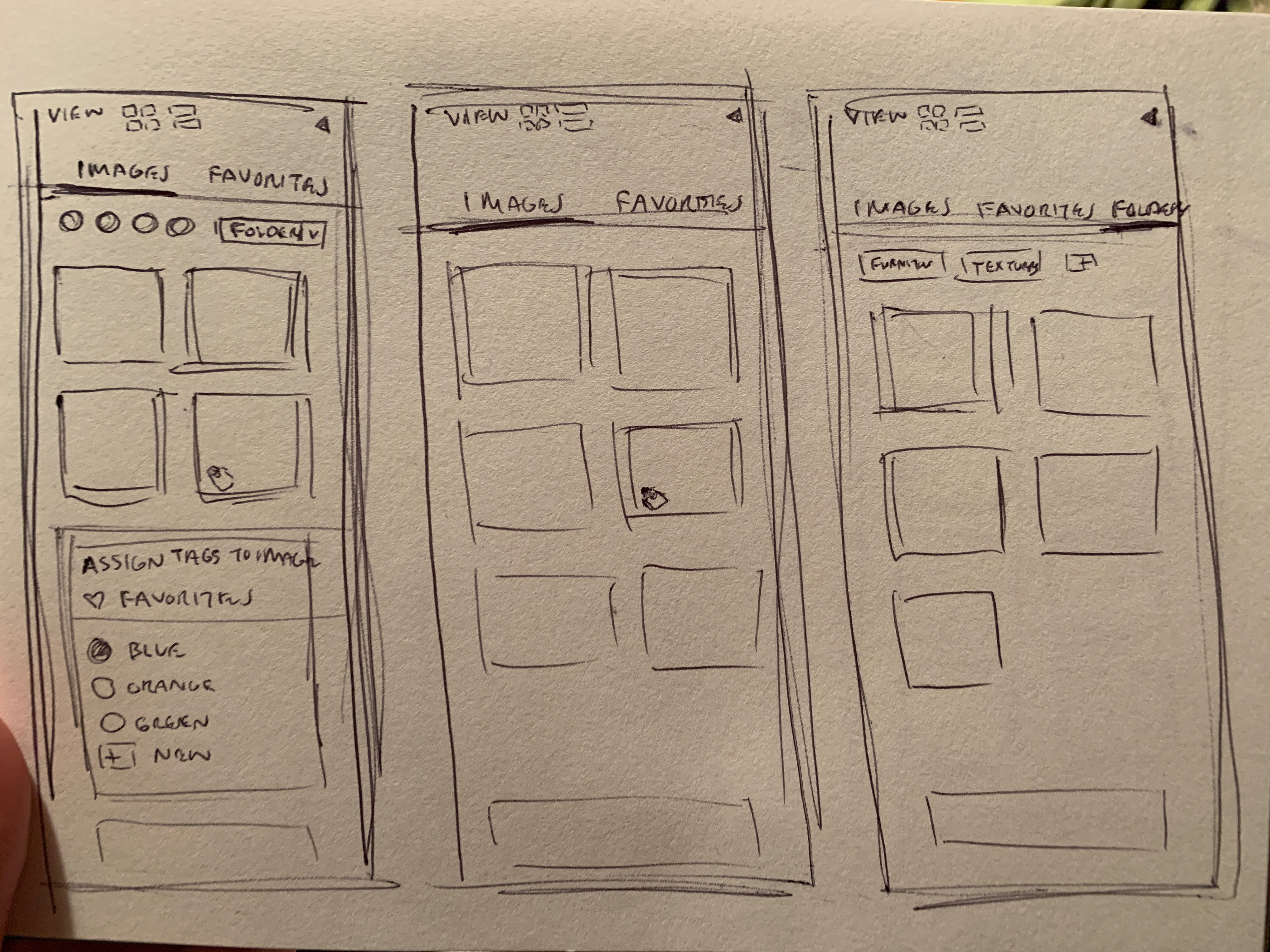
User Testing
Yet, our retention numbers needed to improve. This triggered the question about if we were reaching our target market.
Our traffic was drastically improved by tweaking Google Ads settings.


Business strategy
We made an official Product Hunt launch! Our campaign was featured on Product Hunt's Instagram!
For our strategic partnership with https://www.dimensions.guide/, we designed a landing page for their site. It proved to be a successful target market fit with users coming from D.G. creating an account 35% of the time.
Our mood board competition generated dozens of entries from users.
For our social media channels we created engaging, informative content to showcase prsnt.